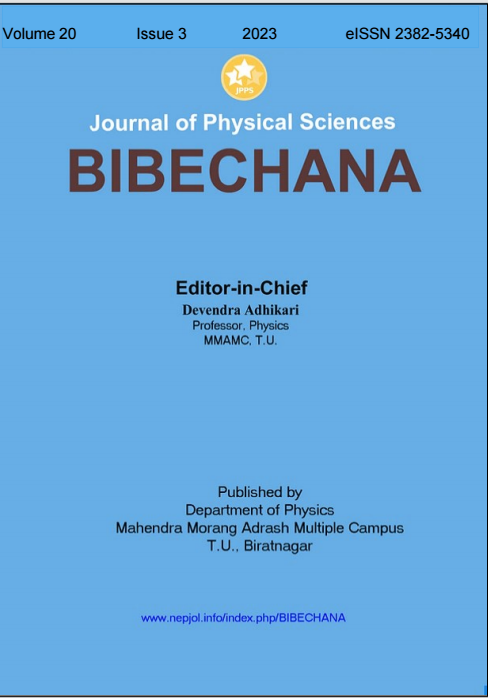Assessment of the antibacterial activity of lemongrass-extracted essential oil
DOI:
https://doi.org/10.3126/bibechana.v20i3.58311Keywords:
Lemongrass, Essential oil, Extraction of essential oil, Anti-bacterial activityAbstract
Lemongrass is one of the medicinal plants having significant applications to cure various diseases. This study aims at extracting essential oils from lemongrass plants and examining their antibacterial activity. The sample of lemongrass for this study was collected from Kailali District, Nepal. The leaves of lemongrass were collected, washed, cut into small pieces, and dried in the sun. Then pieces of lemongrass were steam distilled for about 4 hours using the Clevenger apparatus, and oil was extracted. The extracted essential oil was further utilized to study its antibacterial activity in human pathogens, namely Staphylococcus aureus (S. aureus: gram-positive bacteria), by Agar diffusion and broth dilution methods. It was found that the zone of inhibition for S. aureus in concentrations of 100%, 75%, 50%, and 25% was about 25 mm, 11 mm, 9 mm, and 0 mm, respectively. In addition, it is clear from this study that the gram-positive bacteria were sensitive to essential oils. The lowest and highest zones of inhibition were shown against S. aureus at 25% and 100% concentrations, respectively. The zone of inhibition at 100% concentration is 25 mm and at 25% concentration is 0 mm, so lemongrass oil is effective against drug-resistant organisms only at high concentrations.
Downloads
Downloads
Published
How to Cite
Issue
Section
License
Copyright (c) 2023 Prem Raj Joshi, Prakash Raj Pant, Anup Bist , Gunananda Pant, Bishweshwar Pant, Prem Singh Saud

This work is licensed under a Creative Commons Attribution-NonCommercial 4.0 International License.
This license enables reusers to distribute, remix, adapt, and build upon the material in any medium or format for noncommercial purposes only, and only so long as attribution is given to the creator.




